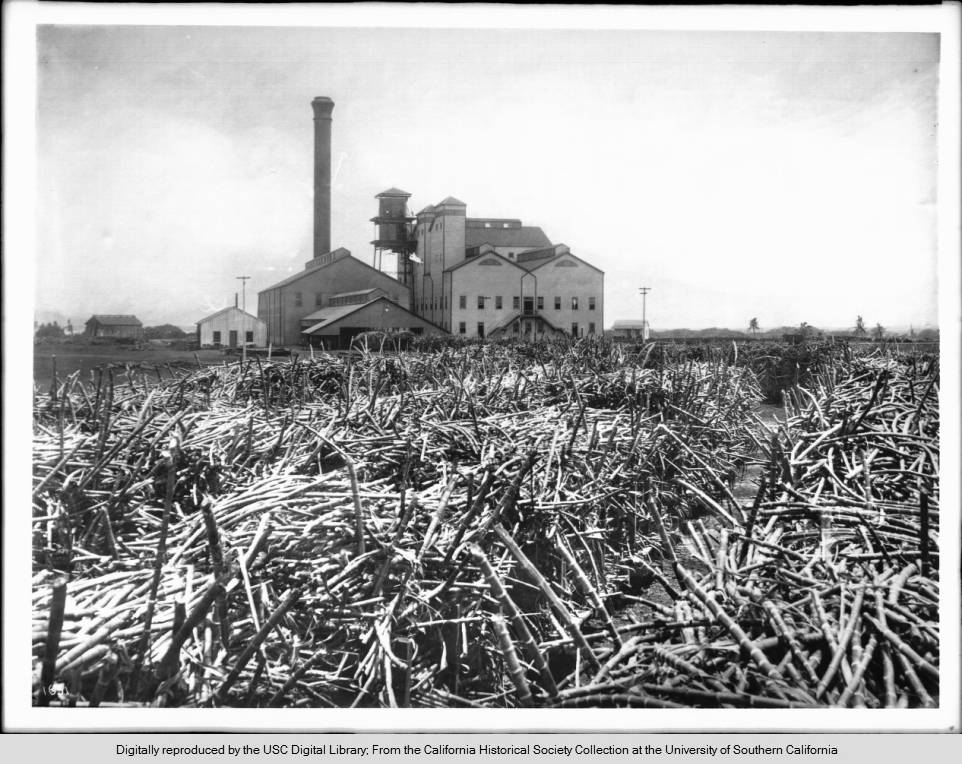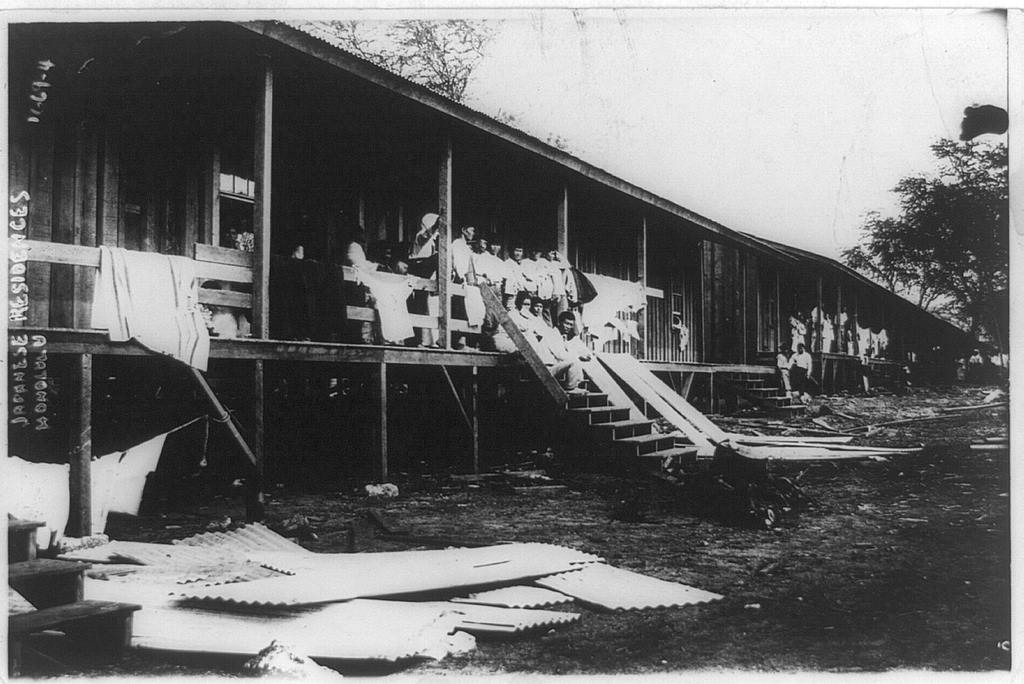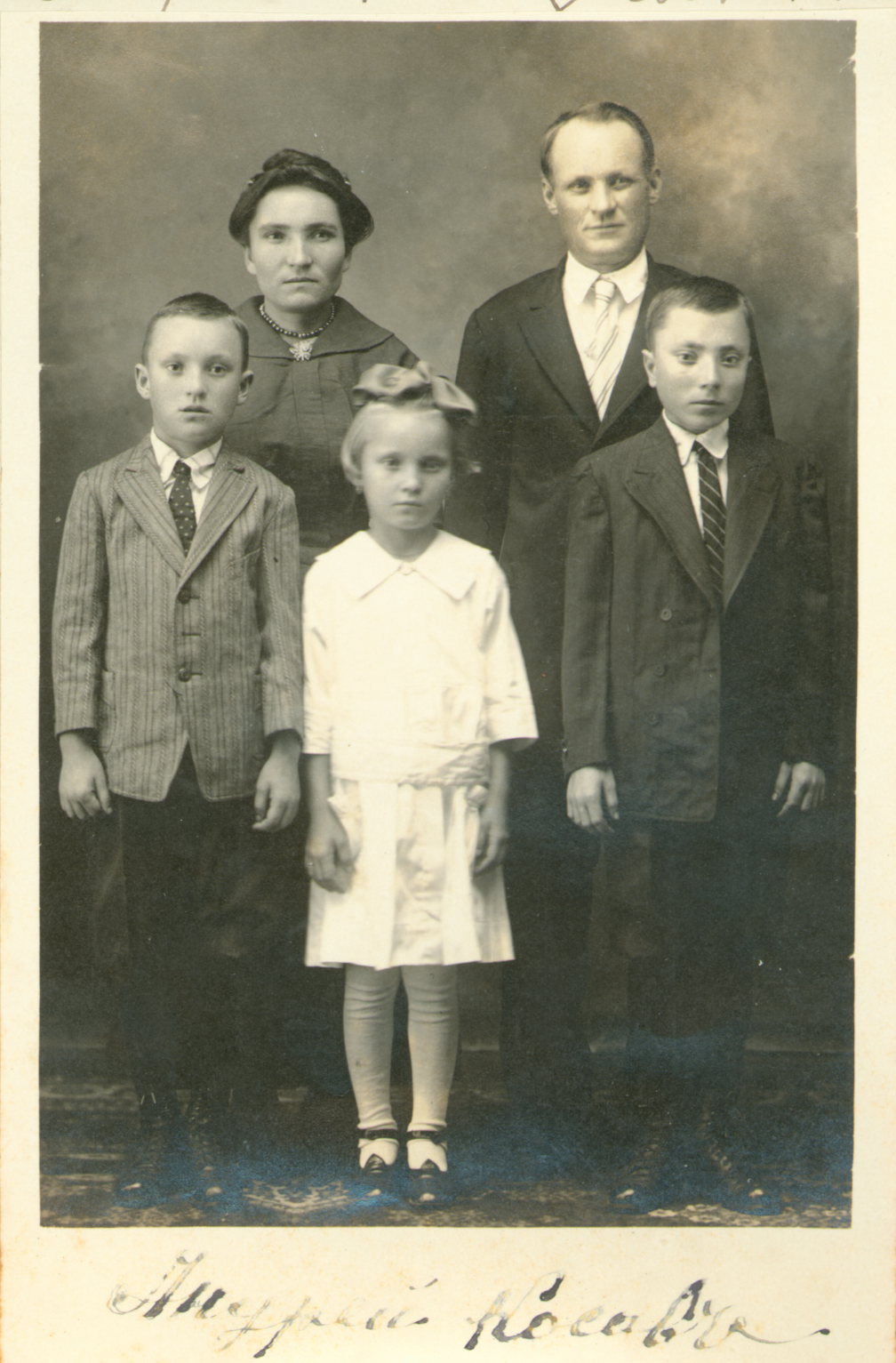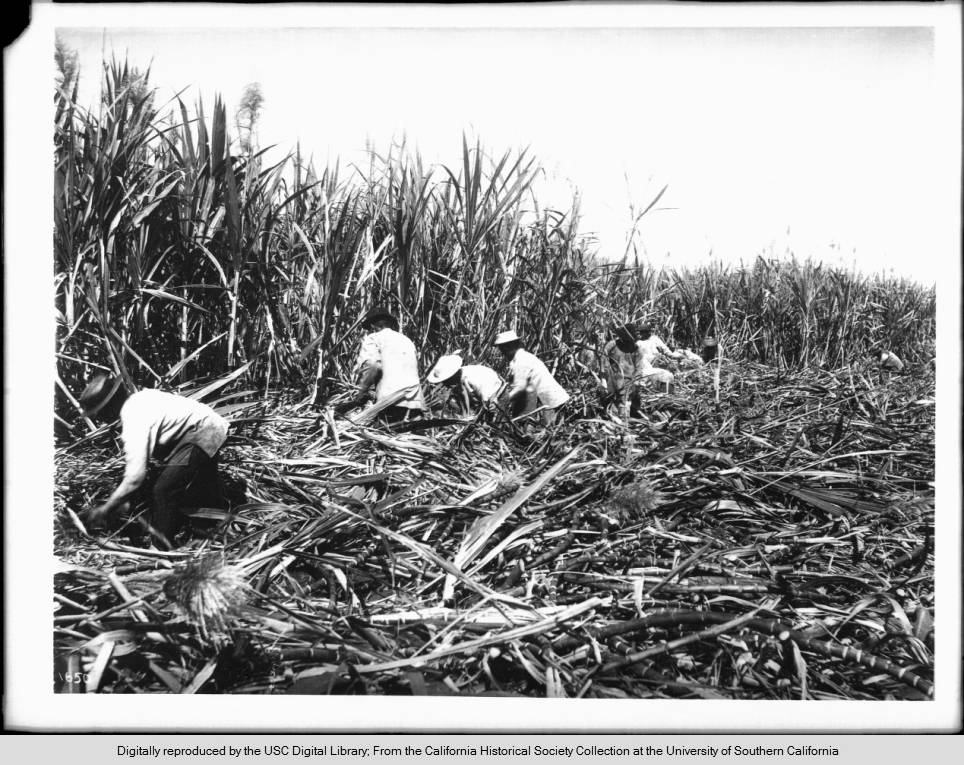August 22, 2017
Hawai‘i is touted as a multicultural paradise, but the history of the sugar industry in this occupied Native land tells us otherwise. The industry played a central role in the making of modern Hawai‘i, but it was built on the backs of hundreds of thousands of laborers who toiled in the sugarcane fields owned by the haole (white) elite. While capitalist exploitation plays a central role in contemporary Hawaii’s foundation story, so too do tales of worker resistance.
Last December, the Hawaii’s last remaining sugar mill suspended operations. At a ceremony marking Hawai‘i Commercial & Sugar Co.’s final haul, Chris Benjamin, president and CEO of the plantation’s parent company remarked:
Rarely has an industry so shaped and influenced a place and helped create a culture, a fabulous multi-ethnic culture, as the sugar industry did. The harmonious melting pot we enjoy in Hawai‘i is a perfect counter to the divisiveness and isolationism that sadly much of the country is embracing.
While we can hardly overstate the sugar industry’s power, the idea that it ushered in a “harmonious melting pot” obscures Hawaii’s true history of capitalist conspiracies, worker uprisings, and one ill-conceived attempt to contrive a whiter working class, all set against the backdrop of ongoing Native Hawaiian resistance.
Even the industry’s mid-nineteenth century origins were rooted in conflict and colonization: haole owners built plantations on dispossessed Native Hawaiian land, and mainland sugar gluts resulting from the Civil War, as well as the westward encroachment of white settlers during the California Gold Rush, contributed to their success.
The ensuing decades of industrialization, relaxed export taxation, annexation, and, later, territory status, made sugar increasingly profitable. By 1870, five major plantations had consolidated their power. Gary Okihiro, author of a seminal text on Hawaii’s sugar-cane history, has noted that this cohort of producers — known as the Big Five — held enormous political and economic sway over the island for the better part of a century.1

Equal Pay for Equal Work
During the peak of their reign, a mere eighty individuals — many of them haole elite who boasted ties to the sugar industry — owned close to half the land area of all the Hawaiian islands. The sugar mongers controlled many of the businesses and public services associated with their industry, from banks and insurance companies to transportation and utilities.2
But King Sugar needed cheap labor to fuel its profits. With only 20 percent of Hawaii’s original population remaining by the time the United States annexed the islands 1898, many of those workers had to come from elsewhere. Despite a mandate from Washington to “develop the Territory on the traditional American lines” — read: to whiten the island — the plantations began importing men and women from Asia.
Plantation owners first brought workers to Hawai‘i from China, but the Chinese Exclusion Act of 1882 inspired planters to seek out new sources of labor. They turned to Japan, where they recruited thousands with the promise of lucrative, short-term contracts. Between 1885 and 1894, an estimated twenty-nine thousand Japanese immigrants arrived to serve as contract workers on Hawaiian sugar plantations. By the turn of the century, they had become the largest ethnic group on the islands.
Upon arrival, any dreams of prosperity were immediately dispelled. Workers encountered unforeseen hardships, inhumane conditions, and deplorable wages.3 They worked twelve-hour days for less than six cents an hour. Overcrowded barracks and poor diets led to surges in illness. Those who attempted to run away would be beaten and jailed for breaking their contracts.

Devastated by the harsh reality of their new lives, women workers channeled their anger into song. They created a genre of music called holehole bushi that they would sing together while working the fields.
Hawai‘i, Hawai‘i
I saw as in a dream
Now my tears are flowing
In the canefields.4
In an interview for the documentary, “Canefield Songs” one of the early plantation workers, Katie Asakura, told the filmmakers, “Just like the song says, I cried all the time in the canefields.”5
But workers did not passively accept the hardships of plantation life. Many engaged in both overt and subtle forms of resistance. They stopped work, attacked lunas (plantation managers), and committed acts of arson.6 They also practiced quieter means of subversion — deliberately slowing their pace, feigning illness, and refusing to obey orders.
“When we reached the end of the lines, we’d get together and talk story,” Katie Asakura recalled.
The luna would be off at a distance. When they arrived on horseback to check us out, someone would signal to us by going [clears throat loudly]. At that point, we would all go back to our work. So, that’s why rather than completing the lines, we’d always leave a little bit left, so when the luna came by we would be busy finishing the line.7
By 1909, worker dissatisfaction reached a boiling point. Japanese immigrants constituted 60 percent of the plantations’ workforce. Puerto Rican and Portuguese workers, who performed the same labor, lived in better housing and earned nearly five more dollars per month than their Japanese counterparts.
Planters devised the nationality-based wage structure to keep workers at odds with one another and therefore less inclined to organize. But Japanese immigrants refused to accept the lowest rung on the ladder.

Responding to a call by Japanese language newspaper Nippu Jiji, workers from several plantations formed the Higher Wages Association (HWA) to make one simple demand: they wanted the same treatment and pay as their peers.
When the plantations ignored their demands, Japanese workers rose up. Over four days in May 1909, seven thousand laborers from Oahu’s major plantations staged the first industry-wide strike in Hawaiian labor history.8
Police arrested striking workers en masse. Many received twenty-four-hour eviction notices, forcing them to clear out of plantation housing on short notice. Honolulu suddenly had to find shelter for some five thousand displaced people. Yasutaro Soga, editor of the Nippu Jiji, wrote, “the city of Honolulu was just like a battlefield, with everything in extreme confusion.”
The strike lasted four months, but displacement and dwindling supplies eventually drove some workers back to the fields. On August 5, 1909, organizers officially ended the strike. Though the workers couldn’t claim immediate victory, planters did raise the minimum wage to twenty-two dollars a month — the amount the Japanese workers demanded — later that year.9
An Unlikely Scheme
The Japanese workers ultimately made some gains, but the planters’ divide and conquer tactics paid off. In his annual address, the president of the Hawaii Sugar Planters’ Association (HSPA), S.M. Damon, noted that 1909 had yielded the highest sugar crop in the history of the islands. He explained that other workers had offset the ill effects of the “prolonged labor disturbance.”10
After the strike, bosses redoubled their efforts to diversify the workforce, hoping to further disempower the Japanese immigrants. They began importing more Filipino labor in order to, as Damon put it, “keep the more belligerent element in its proper place.”11 In that same speech, he also referenced American imperialist objectives that made the Philippines an attractive site for sourcing labor:
Has not the opportunity been offered us to assist the home government in Americanizing the Filipinos? . . . If the Filipino in his sojourn here on the different islands becomes acquainted with these methods, he returns to his country a better man physically and intellectually, and, we hope, politically.12
At the same time, a current of white supremacy became increasingly obvious. One contributor to the Hawaii Advertiser opined, “There seems to be a general feeling that every available source of white immigration should be tested.”13
An unlikely alliance of sugar men, the governor of Oahu, and an entrepreneurial Russian railway contractor contrived a racist scheme to whiten the population by importing workers from Russia. Lured by promises of high wages, free horses, and an eventual share in the land they farmed, some fifteen hundred Siberian workers arrived in Hawai‘i in 1909 and 1910. Like the Japanese immigrants before them, however, they quickly realized that their recruiters had lied. Refusing to tolerate the plantations’ horrible conditions, they rioted, and many left shortly after their arrival.14

By 1911, the HSPA had abandoned the project. In his presidential address that year, W. Pfotenhauer did little to conceal his disappointment. He also blamed “agitators” rather than acknowledge that deplorable working conditions played a role in worker non-compliance:
It is regrettable, in my opinion, that this influx of an entirely new class of much promising laborers — and in time very likely a desirable addition to our population — ceased through the dissatisfaction among themselves, brought about by agitators of their own people, without first acquainting themselves with the true condition of surroundings entirely foreign to them.15
World War I hampered further attempts to recruit European immigrants, so Japanese and Filipino workers continued to serve as the plantations’ primary workforce. Meanwhile, they suffered from race-based wages, poor housing, and unsanitary conditions. The cycle of worker demands and resistance continued.
In January of 1920, Filipino and Japanese immigrants, joined by a handful of Spanish and Portuguese laborers, spearheaded Hawaii’s first interracial workers strike. A pamphlet called “Facts about the Strike on Sugar Plantations in Hawaii” explained the workers’ actions:
We do not wish to strike. We want peace and order; we love labor and production. But when we think of the group of capitalists who show no sympathy whatever toward the struggling laborers, turn deaf ears to their cries, and reject their just and reasonable demands under the pretense that they are formulated by “agitators,” we cannot remain silent.16
An estimated 8,300 workers — 77 percent of Oahu’s workforce — joined the strike, effectively bringing productivity to a halt. Planters evicted twelve thousand workers in the midst of a major influenza outbreak. To add insult to injury, they hired strikebreakers at more than twice the rate their own workers were demanding.17
The haole elite again stoked racial divisions among workers. In recent years, Japanese immigrants had been beleaguered by “yellow peril” propaganda and increasingly surveilled as potential national security threats. During the worker uprising, moneyed interests exploited these fears, casting Japanese labor leaders as rabble rousers conspiring to take over the island for political purposes.18 These xenophobic tactics, coupled with bribes, ill health, and low morale, weakened the movement and gradually drove workers back to their posts.
The strike ended in July. Following the pattern set in 1909, employers eventually granted nominal wage increases, an end to the race-based payment structure, and implemented modest improvements in worker housing and sanitation.
Meanwhile, plantation owners wanted to prove to Washington that they maintained dominance over their workforce and that they were successfully whitening the islands. Testifying to congress, Royal D. Mead, then HSPA secretary, revealed the organization’s white supremacist allegiances:
The Territory of Hawai‘i is now and is going to be American; it is going to remain American under any condition and we are going to control the situation out there. . . . [T]he white race, the white people, the Americans in Hawai‘i are going to dominate and will dominate.19
In reality, thousands of new immigrants arrived from the Philippines every year. In 1924, Filipino immigrants again organized and staged a mass walk out in response to poor working conditions and pay. This time, they operated without any peer support and met violent suppression. By the time the strike ended, sixteen workers and four policemen had lost their lives.20
The ILWU’s Multi-Racial Solidarity
It would take a decade for the fledgling Hawaiian labor movement to recover from the 1924 strike, but, when it did, a new spirit of solidarity had taken hold. Inspired by the movement led by Harry Bridges in San Francisco, the longshoremen who loaded sugar onto barges at the docks formed a union that included workers of all nationalities. When Hilo longshoremen went on strike in 1936, their comrades in Honolulu joined. This level of coordinated unification was unprecedented in Hawaiian history, and it marked the beginning of King Sugar’s slow demise.
Soon after, longshoremen and plantation workers of all nationalities joined the International Longshore and Warehouse Union (ILWU). They studied collective bargaining and, in 1940, signed their first contract with a plantation. A Christian Science Monitor correspondent noted that plantation interests were growing increasingly concerned that the union movement would weaken “the strong controls which local white residents have long exercised.”21
After Pearl Harbor, the Big Five had to relinquish some power to the US. Army under martial law, but the war ultimately benefited the planters. They suppressed wages out of “wartime necessity” and continued to exploit “yellow peril” fears in order to disrupt the growing union movement. As just one example, Ichiro Izuka, president of the Kauai ILWU local, was arrested for handing out union literature then imprisoned by military authorities for four months on the charge of “suspicion.”
These tactics ultimately backfired because they made it clear to the workers that only collective bargaining could improve their circumstances. As the war drew to a close, plantation workers turned out in droves to sign membership cards.
The newly organized union won raises and back pay, but, when leaders pushed for a contract that stipulated a forty-hour work week and sixty-five cent per hour minimum wage, the planters balked. As negotiations stalled, the workers voted to strike.
On September 1, 1946, twenty-five thousand union members walked off their jobs, shutting down all but one of the thirty-four plantations in Hawaii.22 The ILWU successfully negotiated with the owners to stop the evictions that had destroyed previous strikes, but they couldn’t keep the bosses from bringing in scabs from the Philippines. Eventually, the strength of the workers forced the Big Five to capitulate to some of their demands, including the shorter workweek.
With a major victory under its belt, the ILWU firmly established itself as a powerful force. The multinational coalition of workers continued to make gains in their workplaces and beyond. In 1954, they helped usher in the “revolution” that ended the long reign of Republican, plantation-friendly, and predominantly white governance. This political upheaval further undermined the Big Five and strengthened organized labor.
Though King Sugar’s reign has ended, the industry and its worker uprisings have had a lasting effect on the islands’ ethnic makeup, politics, and social order. The state is now one of only five in the United States that has a “majority minority” population, and the only one that has never had a majority white population. It also remains one of the most heavily unionized states in the nation, with membership that includes a multiracial coalition of descendants of original plantation workers, Native Hawaiians, and haole.
The history of Hawai‘i is anything but harmonious, but it testifies to the power of a unified immigrant workforce. As our country once again circles around tired debates about what kinds of immigrants are “good enough” to be American, this history reminds us that immigrants have always played a key role in making the United States a more just and inclusive place.
—
By Natasha Varner, Densho Communications and Public Engagement Manager
[Header image: Workers cut sugarcane on a Hawaiian plantation. Courtesy of University of Southern California Libraries and California Historical Society.]
Notes:
- Okihiro, Gary Y. Cane Fires: The Anti-Japanese Movement in Hawaii, 1865-1945. Philadelphia: Temple University Press, 1991, 14. ↩︎
- Okihiro, 14-15. ↩︎
- Hole Hole Bushi: Song of the Cane Fields. Produced by Chris Conybeare with the assistance of Franklin Odo. 30 min. KHET-TV, 1984. Part of “Rice and Roses” series on immigrant life on the plantations. ↩︎
- Ibid. ↩︎
- Ibid. ↩︎
- Okihiro, 41. ↩︎
- Hole Hole Bushi: Song of the Cane Fields. ↩︎
- Raising Cane, P19 https://babel.hathitrust.org/cgi/pt?id=mdp.39015073497862;view=1up;seq=21;size=200 ↩︎
- Okihiro, 52. ↩︎
- Okihiro, 54. ↩︎
- S.M. Damon, President, Hawaiian Sugar Planters’ Association, Nov. 12, 1909 printed in The Hawaiian Planters’ Record, Vol. II, Honolulu 1910, edited by C.F. Eckart ↩︎
- Ibid. ↩︎
- Alina Simone, Inside the Bizarre, Racist Scheme to Import Siberian Workers to Hawaii in 1909, Gold Bee, May 2, 2016. ↩︎
- Ibid. ↩︎
- W. Pfotenhauer, President, Hawaiian Sugar Planters’ Association, Nov. 14-18, 1910 printed in The Hawaiian Planters’ Record, Vol. II, Honolulu 1911, edited by C.F. Eckart. ↩︎
- Okihiro, 71. ↩︎
- Ibid. ↩︎
- Okihiro, 56. ↩︎
- Lucie Cheng, Labor Immigration Under Capitalism: Asian Workers in the United States Before World War II, Berkeley: University of California Press, 1984, 582. ↩︎
- Victor Weingarten, Raising Cane: A Brief History of Labor in Hawaii, Honolulu: International Longshoremen’s and Warehousemen’s Union, 1946, 30. ↩︎
- Weingarten, 40. ↩︎
- The Hawaii Digital Newspaper Project. ↩︎

